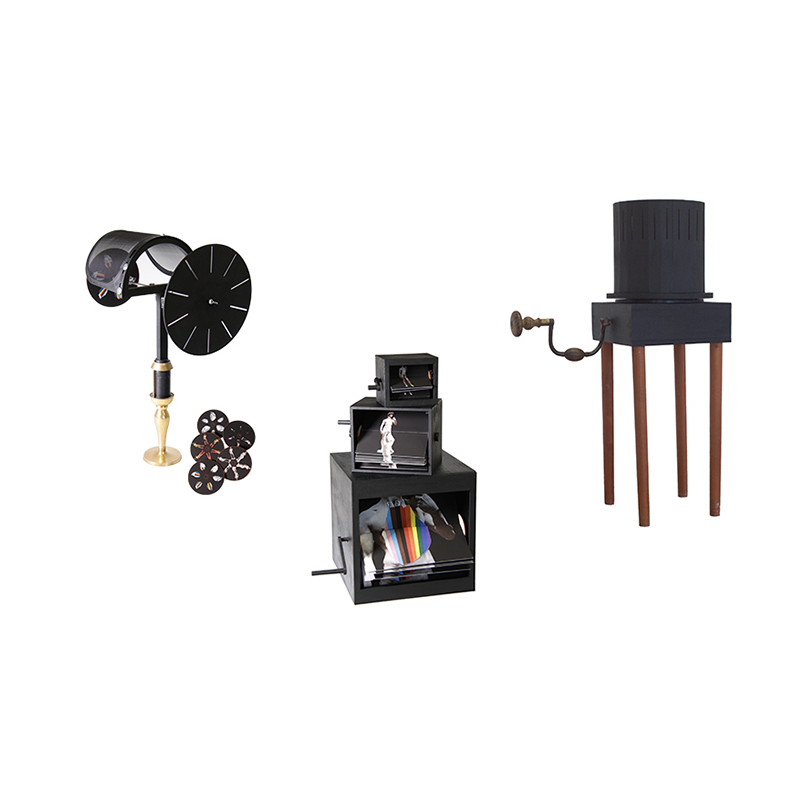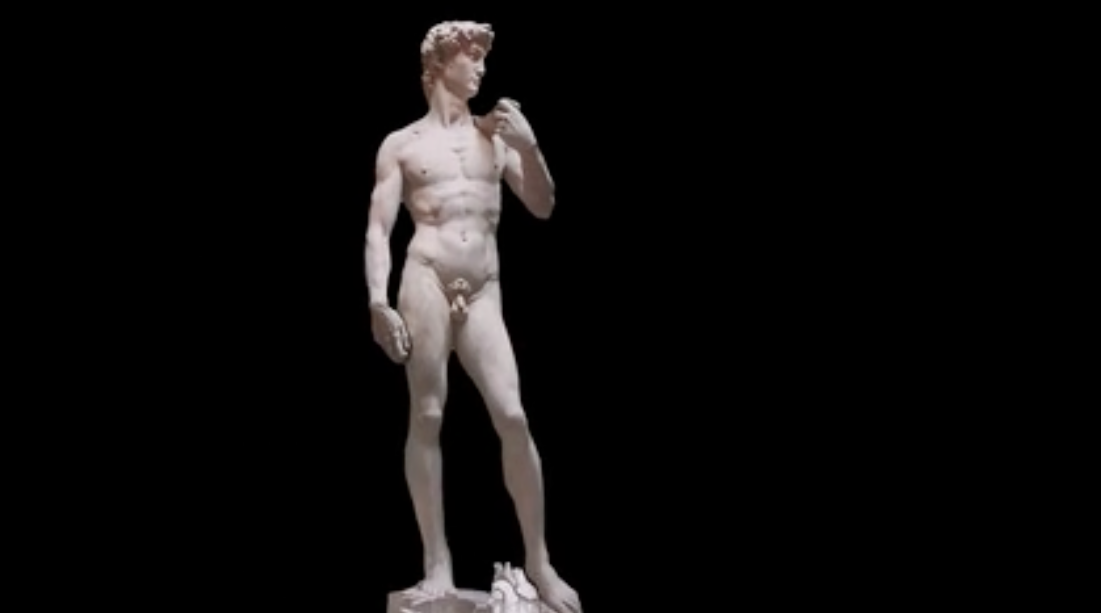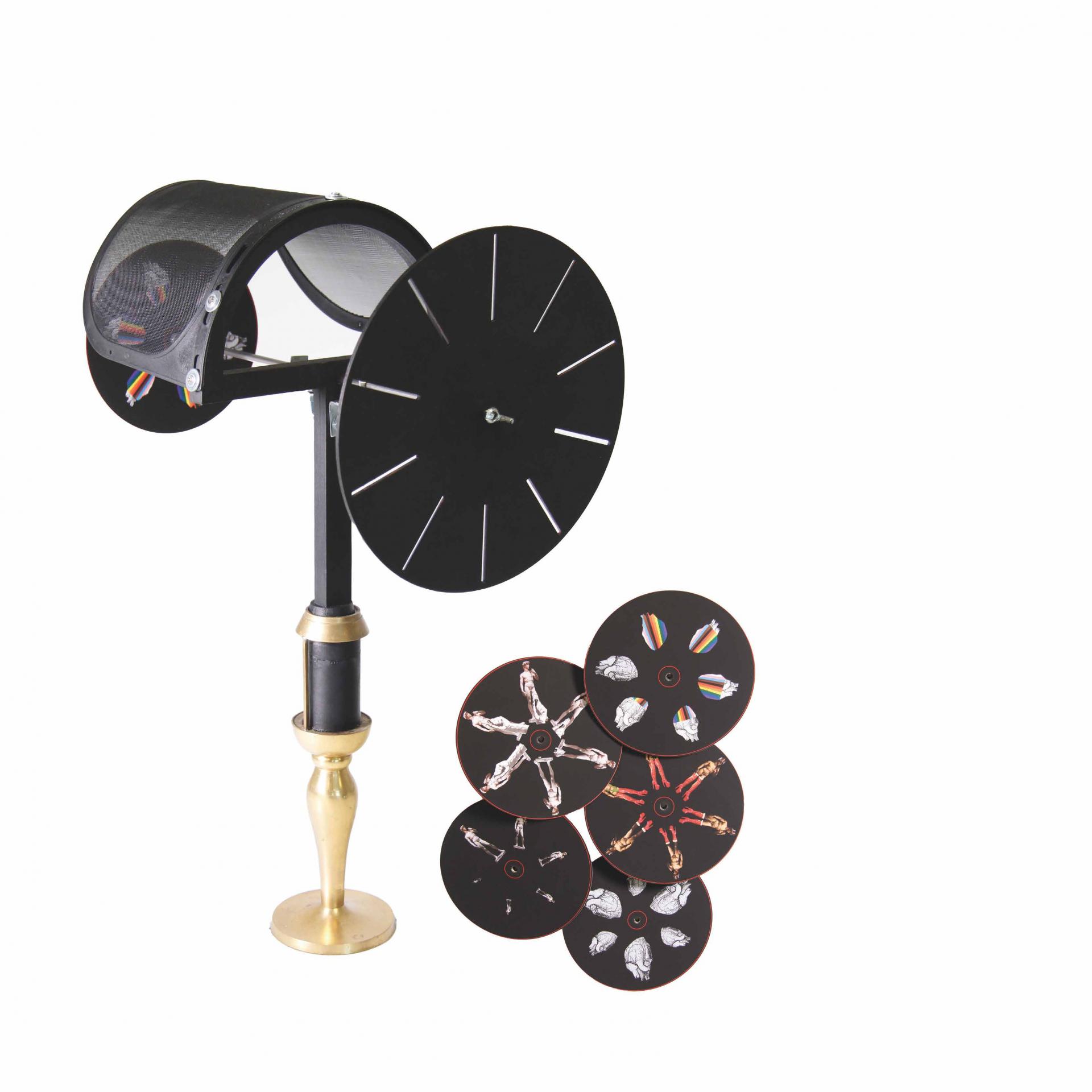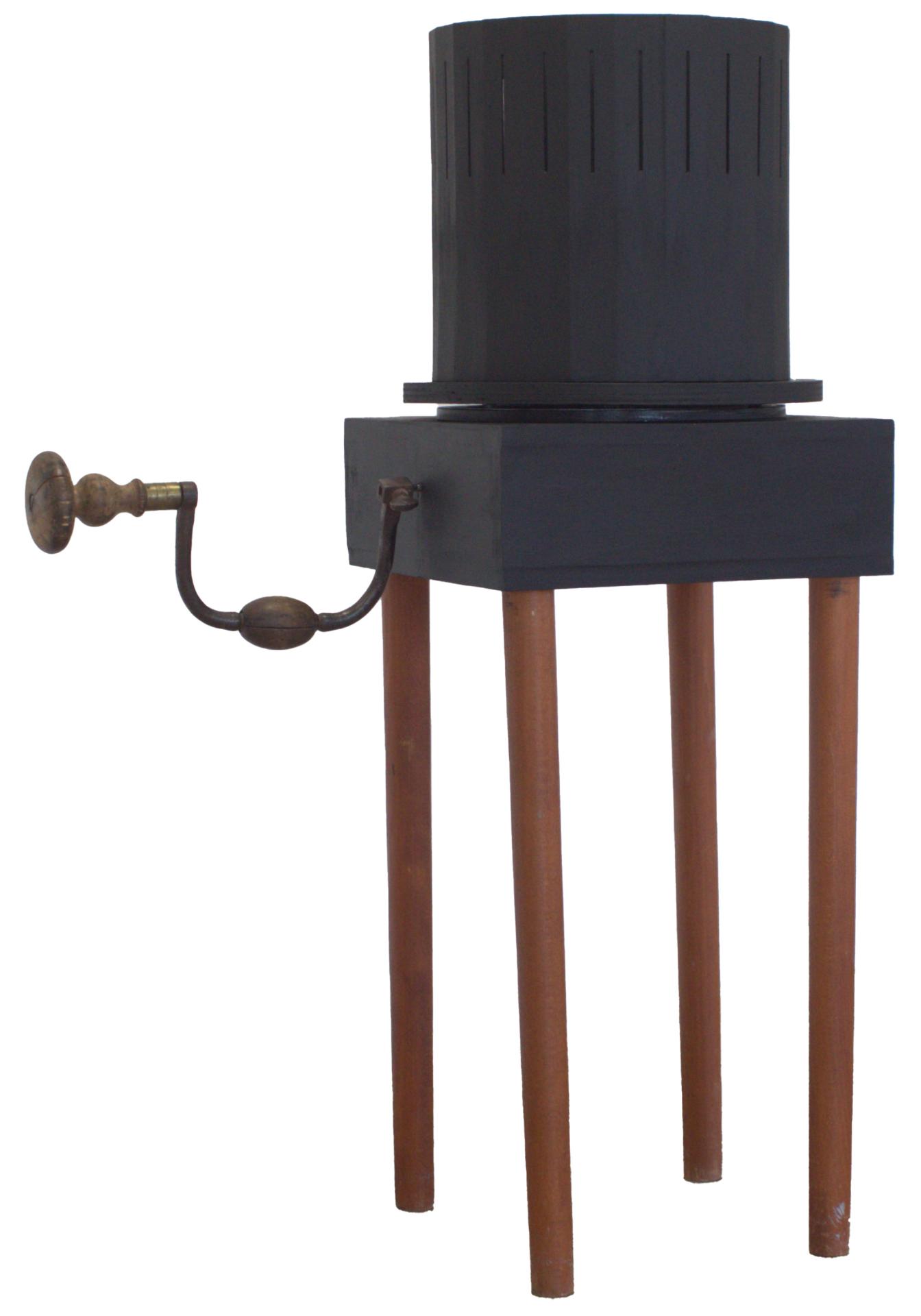THE REBOOT OF DAVID
I have been fascinated with the manipulation of visual culture, since my third-year dissertation, which explored ideas about gender through the lenses of modern artists and makers and thinkers. This research determined how multiple realities and perspectives allow for the amplification of voices.
I am fascinated by film as perspective informs all our ideas and realities. By bringing the means for viewing images directly to the user, the interaction with media in this project becomes an act of rebellion against patriarchy and mainstream culture.
The starting point for this exhibition pieces was my P1 project ‘The Rebirth of David’. To make this, I used an analogue-to-digital process, combining collage and printing techniques to provide the raw material for
a film. Developing my knowledge of the principle of stop-motion animation, I created 2-D digital images that were the basis for a 3-D digital film.
These were extracted, and comprised the frames for the various animating machines displayed.
VISUAL KNOWLEDGE IS POWER
By revealing how images can be manipulated, and having the user in direct control over the speed and direction of travel of the film (depending on how fast or slow the images are spun), the power and playfulness of visual communication
is maximised.
Many early methods of ‘animation’ involved sequences of images viewed in different ways to create the illusion of motion. Some argue that ancient Greek vases that depict sequences of images around them, that could be spun to bring them to life, are an early example of animation.
ANIMATION MACHINES The birth of modern animation occurred with animating machines. An early Victorian craze, these allowed images to be viewed sequentially to create the appearance of movement, often requiring the user to spin, rotate or manipulate the images. The images were sometimes created on discs that could be switched on the machine, allowing the viewer to swop ‘reels’, or they were fixed onto the inside of the drum. Early examples of these animating machines, all of which incorporated a sense of playfulness, are the phénakistiscope, the stereoscope the zoetrope and the thaumatrope. Whether eventually marketed as toys, or used as entertainment, these were the precursors to today’s visual culture, from modern ‘video’ games, to GIFs and film editing.
ZOETROPE Patented in 1867, the name of the ‘zoetrope’ (above) comes from the Greek words zoe (‘life’) and tropos (‘turning’). The heart of a Victorian party it mesmerised families and revellers. The ‘wheel of life’ is spun as the viewer looks into the drum through mathematically positioned slits, revealing an animated scene.
FLIPBOOK Variations of the flipbook and flipbox (below) included the Mutoscope and the Kinetoscope, which had pages mounted on a central cylinder, rather than bound in book form. Flipbooks allow the viewer to control the speed of the pages, which need to rotate in quick succession for it to be effective. Flipbooks have dominated visual culture, mass-produced and used in advertising, as well as being iconic symbols of early film production.
THE LUDOSCOPE This later machine was developed from the more primitve phenaktiscope. With the addition of a viewing hood and marketed as a motion picture ‘toy’ it came with discs that could be removed to alternate between different ‘shows’.






